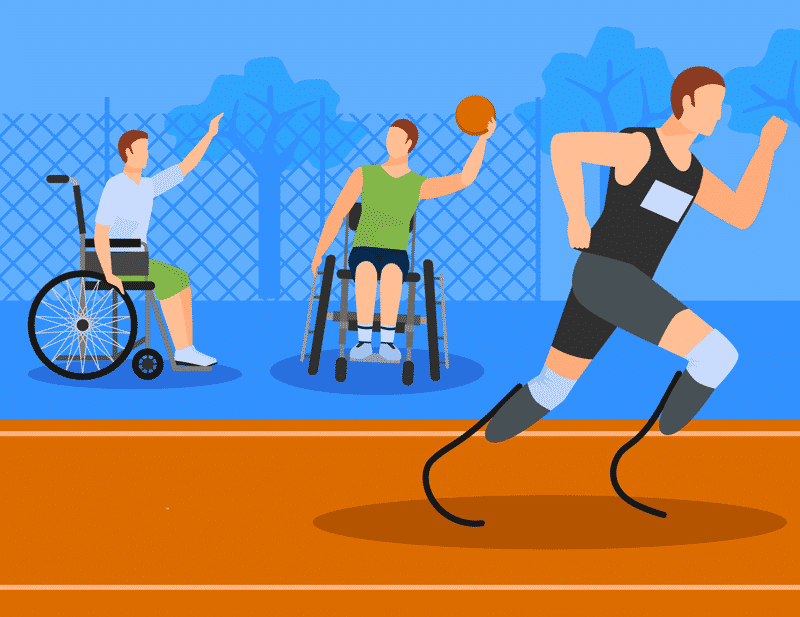It is common knowledge that exercise is good for you, both physically and mentally. It boosts good mood, improves your self-esteem, helps with stress, anxiety and even depression, and triggers an overall sense of well-being. However, while exercising with limited mobility can add an extra challenge to finding the right workout routine for you, that doesn’t make it an impossible feat.
For those living with a disability, seniors facing the natural consequences of old age, people recovering from injury or dealing with being overweight, arthritis or any other ongoing illness, the idea that they can no longer reap the benefits of exercise may linger around but in fact, they couldn’t be further from the truth.
In reality, if this is your personal situation, there’s a great chance that it is you who will mostly benefit from a good exercise routine, one that takes your special conditions into account and puts you on the path to enjoying a happier, healthier and active life.
Exercise Is Meant For Everyone
Mobility issues certainly make some types of exercises more challenging than others, however, that doesn’t mean that you’re restricted from enjoying the perks of a regular exercise routine. Whatever type of exercise you choose to practice, it will all come with great health benefits that go from gaining a greater range of mobility and flexibility over time to improved cognitive function, and many more.
The key comes from creating a routine that includes three different types of exercises: Cardiovascular, strength training and flexibility. The first thing would be to talk to your physician about what types of exercises you should perform or avoid, along with the recommended amount of times per week to perform them and any other special care you should be aware of.
For people with upper body injuries or disabilities, activities such as walking, jogging or swimming with the use of flotation aids can be a great choice, while those facing joint problems may find greater comfort in isometric exercises that help maintain muscle strength and prevent further deterioration.
If you suffer from lower body injuries or disabilities, have severe weight problems or simply feel prone to falling due to old age, exercising from a chair can be the right choice of workout.
Cardiovascular chair aerobics or any other type of rapid, repetitive movements offer aerobic benefits and loosen stiff joints, while using dumbbells, resistance bands or anything weighted that fits your hands can count as strength training and exercises, such as chair yoga, tai-chi or even just stretching throughout the day, contribute to flexibility, reducing pain and pressure on your muscles that often comes from seating during long periods.
On the other hand, people dealing with severe weight issues or diabetes can gradually start incorporating more activity into their daily lives, such as walking the dog, dancing or climbing stairs. This combined with a few minutes a day of workout time that includes some gentle yoga or stretching and strength training in a chair can help stabilize blood sugar levels, lower blood pressure and reduce weight. If you experience pain coming from your joints or feet, swimming or other water-based activities can be a great choice as well.
Set Yourself Up For Exercise Success
While exercising with limited mobility can come with its own set of challenges, they shouldn’t be a reason for you to lose motivation. After consulting with your doctor or physician and selecting the right type of exercise for you, it’s important to create a routine and do everything that’s possible to stick with it.
Make it a routine
Treat yourself with patience and start slow at first with an activity that you enjoy, going at your own pace and gradually increasing your activity level as you feel more comfortable. Making exercise a part of your daily life requires discipline so plan to exercise at the same time every day and combine a variety of workouts so that you don’t get bored.
Don’t be discouraged though if you skip a few days or weeks. Life happens and it’s okay as long as you don’t use it as an excuse. Simply start your routine again and slowly bring yourself back up to where you were when you left.

Stay Safe
The best way to avoid injury and make your exercise routine a successful one comes from listening to your body and taking care of it.
If you experience pain, severe discomfort, nausea, dizziness, chest pain, irregular heartbeat or clammy hands, stop right there. If you continually feel pain after 15 minutes of exercise, limit your workouts to sets of 5 or 10 minutes and instead exercise more frequently.
Remember to wear appropriate clothing, drink water often, avoid any activity that involves injured body parts and warm up before you start your routine with a few minutes of light activity, such as walking or arm swinging, followed by some light stretching and cooling down once your workout is over with a few more minutes of light activity and some deep stretching.
Overcoming mental barriers
Sometimes, especially if you’re new to an exercise routine, your body won’t be the only one playing against you. If you feel self conscious about your abilities or particular health issues, it’s important not to let it demotivate you.
Instead, avoid focusing on your mobility or health issues, and find things that you can enjoy out of your workout. If something isn’t working, then get creative and find something new. Also, remember to feel proud about the effort you’re putting yourself through. You’re doing this for yourself and it will get easier over time.
Find what works for you, and stick to it
When facing restrictions in your mobility it’s easy to feel like regular exercise does not deserve to be a priority, however, by finding rewarding fitness activities that you enjoy, you’ll be able to slowly but surely go beyond your physical limitations and experience the benefits of a good workout in no time.
It is never too late to start exercising with limited mobility, in fact, research shows that by putting yourself in movement, you have greater chances to slow down the effects of a sedentary life, improving your ability to perform activities of daily living and in the meantime, boosting your overall health and sense of well-being.

 p-t0">
p-t0">